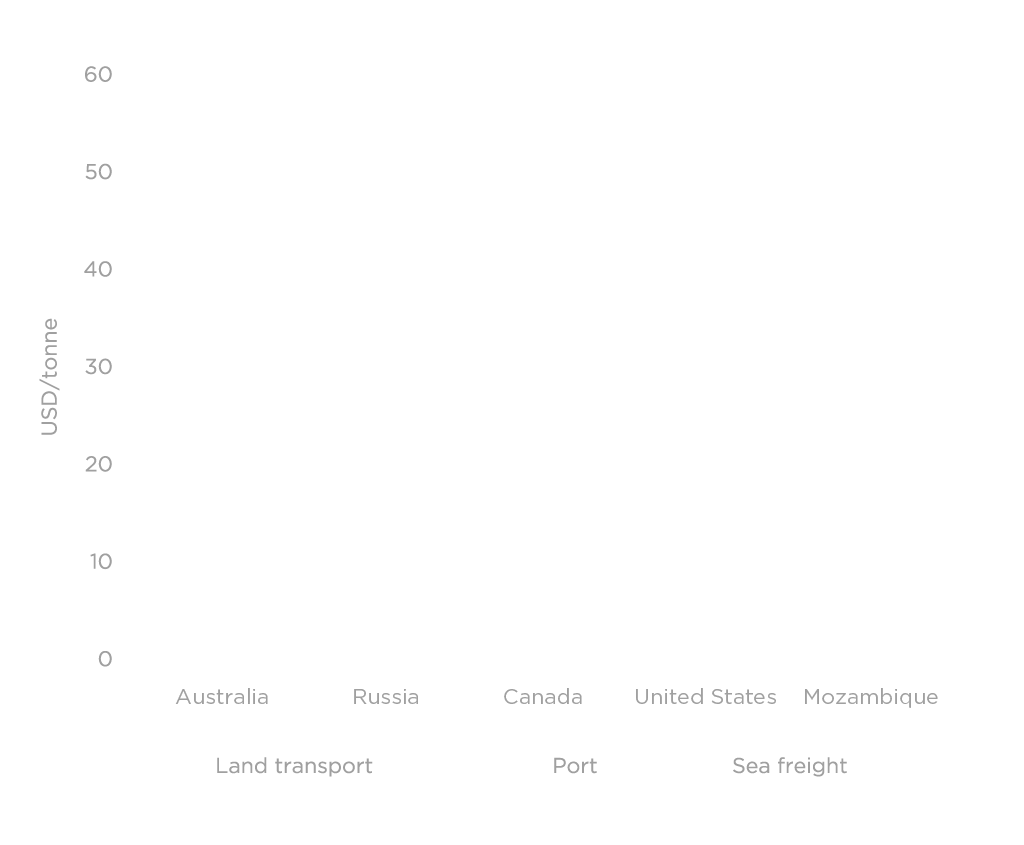Future of Coal
Our ongoing business success is linked to the future demand for the commodities we transport for our customers.
68% of Aurizon’s revenue is derived from coal.
In FY2016, metallurgical coal underpinned 73% of our network revenues and 51% of our (coal related) rail haulage revenues.
Aurizon’s coal-related revenues.
68% of Aurizon’s revenue is derived from coal.
In FY2016, metallurgical coal underpinned 73% of our network revenues and 51% of our (coal related) rail haulage revenues.
Aurizon plays a major role in Australia’s coal exports.
Over two-thirds of Australia’s coal exports either use our Network or are carried by our above rail (haulage) business.
Aurizon’s role in Australia’s coal exports.
Aurizon plays a major role in Australia’s coal exports.
Over two-thirds of Australia’s coal exports either use our Network or are carried by our above rail (haulage) business.
Australia is the world’s largest coal exporter.
Australia accounts for 66% and 23% of the world's seaborne metallurgical and thermal coal supply respectively.
Australia is the world’s largest coal exporter.
Australia accounts for 66% and 23% of the world's seaborne metallurgical and thermal coal supply respectively.
Future of Metallurgical Coal
Also referred to as ‘coking coal’, metallurgical coal (used to produce steel) is a fundamental input into the modern built environment — enabling the production of buildings, infrastructure, cars and consumer goods.
Metallurgical coal has limited substitutes in steelmaking.
Metallurgical coal will still be required for the majority of steel production across the globe in 2030 and demand will almost double in India.
Indian steel production and metallurgical coal demand.
Metallurgical coal has limited substitutes in steelmaking.
Metallurgical coal will still be required for the majority of steel production across the globe in 2030 and demand will almost double in India.
There is a scarcity of metallurgical coal across the globe.
Most steel producing countries rely on metallurgical coal imports due to a lack of reserves.
Outlook for seaborne metallurgical coal demand and supply to 2030 by key countries (excluding China).
There is a scarcity of metallurgical coal across the globe.
Most steel producing countries rely on metallurgical coal imports due to a lack of reserves.
Australia has an export infrastructure advantage.
Australia has the lowest average transportation and port costs compared to other significant metallurgical coal exporting nations.
Land transport, port and sea freight costs from major metallurgical coal export countries to India.
Australia has an export infrastructure advantage.
Australia has the lowest average transportation and port costs compared to other significant metallurgical coal exporting nations.
Future of Thermal Coal
Thermal coal is used to produce electricity and consequently it supports the provision of affordable and reliable energy for households, business and industry, including lighting, heating, cooling, cooking, refrigeration, communications and industrial processes.
The demand for thermal coal power generation in asia will increase.
Coal-fired power generation in non-OECD Asian economies is expected to increase 43% in absolute terms to 2030.
International Energy Agency (IEA) outlook for electricity generation in non-OECD Asia by source (TWh, share).
The demand for thermal coal power generation in asia will increase.
Coal-fired power generation in non-OECD Asian economies is expected to increase 43% in absolute terms to 2030.
Importance of high quality coal to reduce (GREENHOUSE GAS) GHG emissions.
Aurizon customers’ coal has the highest energy content and relatively low ash content when compared to most other major sources of thermal coal.
Carbon emission intensity and ash content.
Importance of high quality coal to reduce (GREENHOUSE GAS) GHG emissions.
Aurizon customers’ coal has the highest energy content and relatively low ash content when compared to most other major sources of thermal coal.
Importance of efficient technology to reduce GHG emissions.
When ultra-super critical coal technology is used with high quality coal, it can reduce emissions by 48% (compared to sub-critical plant technology using lower coal quality).
Electricity sector emissions abatement potential.
Importance of efficient technology to reduce GHG emissions.
When ultra-super critical coal technology is used with high quality coal, it can reduce emissions by 48% (compared to sub-critical plant technology using lower coal quality).
Please see Aurizon’s full Sustainability Report for list of assumptions and references.


